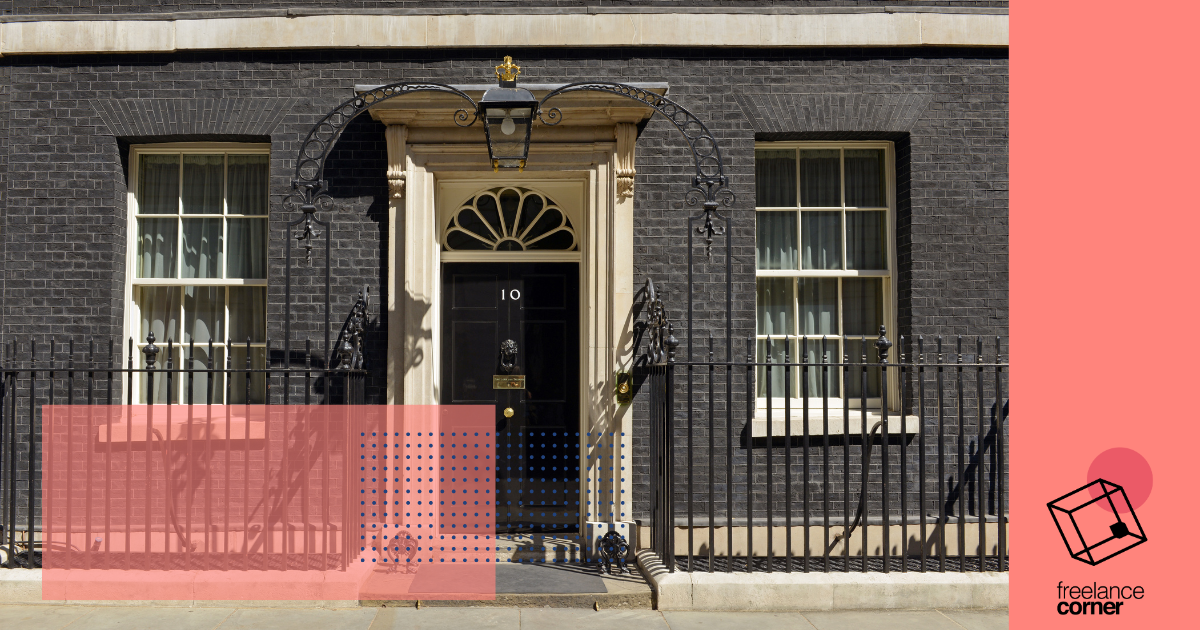If you dream of becoming your own boss and getting paid to draw for a living, then learning how to become a freelance illustrator is one way to make it become a reality. Whether you want to use your artistic skills to earn some extra money as a side hustle, or plan to go full-time for the start, it might help you to understand what’s involved in building your new career.
Even the most artistic and talented people have to eventually deal with the business side of self-employment. But the trade off is the freedom to choose clients and projects, or being able to set aside time for your own concepts.
What is a freelance illustrator?
The quick answer is that a freelance illustrator draws for clients. But such a broad definition covers a wide range of specialisms. And a general rule for self-employment is that it’s easier to become known and respected for your skills within a particular niche, rather than trying to cover every aspect of an industry.
Some of the specialisms in freelance illustration include:
- Concept art and character design: Films, video games, toys and other areas will require visual assets at an early stage, whether you’re given creative freedom or strict boundaries for your work.
- Entertainment art: This ranges from comics and graphic novels to movie posters and anything else relating to the entertainment industry. This includes becoming a storyboard illustrator for films.
- Editorial and book illustration: Newspapers, magazines and book publishers all require artwork.
- Product Design and Packaging: While there are specialist design roles for these areas, illustrators are often brought in for specific projects including clothing and fashion, collateral artwork for product packaging and more.
- Technical illustration: This focuses on representations and renderings of blueprints, installations, technical diagrams and more.
But there are many more. You might specialise in calligraphy, nature, medical illustrations, tabletop and card games, greeting cards, or any number of areas where artwork is regularly required. And you may be working alone, or collaborating with in-house designers and other freelancers.
The one constant is that becoming a freelancer means working for clients. But many illustrators will split their time between freelancing, and self-employment by directly selling their art to customers. It’s really down to you in deciding the right mix between client work and art sales, and which direction you want to follow in the future.
If you’re thinking about becoming a freelance illustrator or pursuing a self-employed career, the most important factor in your potential success will be how ready and willing you are to do all the non-creative work required, or if you’re able to organise outsourcing it to someone else.
What skills or qualifications do you need to become a freelance illustrator?
Formal qualifications and degrees can certainly help with becoming a freelance illustrator, particularly in areas where clients might demand more rigor, such as technical artwork. But the main things any potential client will look at will be your experience and portfolio.
If you’re considering investing in education or certified courses, then spend some time browsing job adverts from your target clients and see what their typical requirements might be. This can help you understand what projects might open up if you achieve a particular qualification, or whether you’re better off studying something different.
The most important skills you will need are the passion and dedication to keep developing and promoting your artistic work. You’ll need to understand design concepts, and use art techniques to develop your talent and give your work more impact. And it’s important to understand that client deadlines mean you can’t necessarily wait for a creative mood before you start illustrating.
If you develop the habit of drawing every day, it means you’ll establish a work routine before it becomes a necessity. And developing your illustration style will take time.
Your passion for illustration should also extend to learning from existing leaders in your particular niche, or the wider art world, and staying up to date with trends in your industry and specialism. Clients may expect you to be familiar with particular software, and deliver work in specialist formats. A technical illustrator might need to learn AutoCAD as much as Photoshop, for example.
Along with developing your artistic side, successful freelance illustrators also tend to have good communication and personal skills to help them maintain a network of clients, collaborators and contacts. And business management skills are needed, even if you plan on offloading as much of it as possible to employees or other freelancers.

Building your illustration portfolio and client list
Given that your work is the biggest factor in securing new clients, building a strong illustration portfolio is essential. This can be hosted on your own website, using any of the popular platforms including WordPress, Squarespace, Ghost or Wix. And if you plan on selling your artwork, then it’s worth considering Shopify, alongside WooCommerce for WordPress sites. It’s worth investing in your own domain name to keep the same web address if you decide to switch platforms in the future.
But you also need to put your portfolio where art directors and other potential clients are likely to already be searching. While it means being seen alongside your rival artists, your personal website is likely to be a pretty quiet place when you’re starting out.
Some of the most popular places for illustrators to share work and find clients include:
You can also develop your network on social media, particularly using more visual platforms such as Instagram and Pinterest. In addition to sharing your own work on social media, it’s also a useful way to connect with other artists and freelancers in other areas who may want to collaborate. Groups like Creative Freelancers UK have a wide range of self-employed professionals sharing opportunities and advice, along with venting about common freelancing issues. It’s also a potential route to meet and connect with more experienced illustrators who might offer guidance, mentoring or occasional projects.
It’s possible you already have an extensive collection of illustrations ready to upload to your portfolio. But it’s more likely that you will be lacking material in the early days. This is where personal projects can be incredibly useful, especially in building a reputation for the areas you’re most interested in. If you want to become a children’s book illustrator, then it makes sense to display your strongest efforts in that area, whether or not they were for a client.
Focusing your portfolio doesn’t mean you can’t experiment, or share work in different areas. But clients are more likely to hire illustrators who largely specialise in the area they need, rather than picking someone at the complete opposite end of the spectrum. And there are plenty of cases where a designer or illustrator has been hired by companies based on reimagining their current assets and artwork.
If you want to stand out on the portfolio platforms, then you need to regularly update your work and participate in the community. Schedule regular times to post new examples, like and follow other people, post comments and generally interact.
Another way to help clients visualise exactly how you can help them is to show your work in context. If you want your illustrations to appear on products or clothing, then it’s relatively easy to mock up examples if you can’t share real items yet.
Finally, you should consider getting an artists’ rep, as long as they’re commission-based so that you only pay when they secure projects for you. Just make sure you’re careful about signing contracts which might restrict you from working with other reps, or even prevent you from taking work directly while you’re with them.
How much can freelance illustrators earn?
Your earnings as a freelance illustrator will vary depending on your skills, experience, reputation and the demand for the niche or specialism you’re in. So, any guide figures are a rough average, but you could earn a lot more, or less.
The average base pay for freelance illustrators in the UK is around £34,192 (Glassdoor), based on mid-level experience. It’s worth remembering that you might also supplement this with direct sales of your artwork, or be paying up to 30% of your gross earnings as commission if you’re securing projects through an agent.
Illustrators generally invoice on a project basis rather than a day rate, and the fee will involve specific details including usage, direction and the geographic territory it will be used in. There’s a big difference between creating one promotional image for a small business to use in a local publication, and licensing your work to appear in a global advertising campaign for the next five years.
For help in pricing your work, you can read our guides to subjects including setting your freelance rates, and the Association of Illustrators (AOI) has specific advice on how to calculate suitable fees for your art.
More resources and support to become a freelance illustrator
Researching other freelance careers? Why not check out our other guides:
- How to become a freelance web designer
- How to become a freelance writer
- How to become a freelance Virtual Assistant (VA)
- How to become a freelance SEO consultant
- How to become a freelance structural engineer
- How to become a freelance photographer
- How to become a freelance business analyst
- How to become a freelance event planner or organiser
- How to become a freelance proofreader
- How to become a freelance bookkeeper
- How to become a freelance coach
- How to become a freelance content creator
- How to become a freelance photojournalist
- How to become a freelance hair stylist
- How to become a freelance recruiter
- How to become a freelance translator
- How to become a freelance editor
- How to become a freelance music producer
- How to become a freelance WordPress developer
- How to become an author
- How to become a freelance tutor
- How to become a freelance makeup artist
- How to become a freelance animator
- How to become a freelance photo editor
- How to become a freelance model
- How to become a freelance digital marketer
- How to become a freelance network engineer
- How to become a freelance chef
- How to become a freelance fundraiser
- How to become a freelance data scientist
- How to become a freelance graphic designer
- How to become a freelance accountant or financial consultant
- How to become a freelance interior designer
- How to become a freelance personal trainer
- How to become a freelance HR consultant
- How to become a freelance filmmaker
- How to become a freelance transcriptionist
- How to become a freelance game developer
- How to become a freelance first aid trainer
- How to become a freelance video editor
- How to become a freelance project manager
- How to become a freelance musician
- How to become a freelance massage therapist
- How to become a freelance social media manager
- How to become a freelance 3D artist or modeller
- How to become a freelance AI prompt editor
- How to become a freelance dog groomer
- How to become a freelance location scout
And you can get support and help if you’re starting out with self-employment, or still in the early stages of building your career, with the IPSE Incubator. The 12-month programme is currently free with IPSE membership. It includes advice, events, webinars, networking and more, tailored to anyone just beginning their freelance business.






